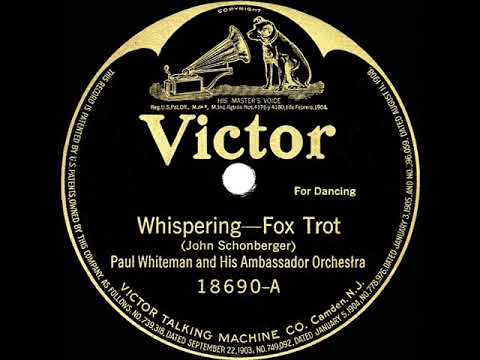This post is about the Whispered ‘Ah’…not the smash hit sensation Whispering…
Nor the Dizzy contrafact Groovin’ High*
Last Time On Blogging the Alexander Technique…
I’ve spent the last 3 weeks writing about breathing for one purpose: to explain FM Alexander’s Whispered ‘Ah’. This post will do that. If you haven’t read:
Then you might be a missing some details. Take your time to learn the Whispered ‘Ah’ and you will be rewarded.
This involves learning how the Elevator Game teaches you the general feeling of stiff weight, dead weight, and something else.
What Is the Whispered ‘Ah’?
I’m going to cut to the chase and give you a description of the procedure. I’ll then give you my take on why you should practice this and how to assess if things are going well.
A Whispered ‘Ah’ may be performed sitting, standing, or lying down. Once you’re walking things are exponentially more complicated. I would expect a brilliant actor to be able to pull that off after years of practice, so take your time and try this out lying down to start!
Step 1. Lie down in constructive rest and play the looking game.
Step 2. Be Sherlock and think the Guiding Thoughts.
Step 3. Think of Something Funny
When we think of something funny, it doesn’t need to be a laughing-milk-through-the-nose level joke; it just needs to create a little bit of liveliness in the face. I’ll often ask my students to have their face go into a bit of a Jim Carey mode. Everything should be a little bit pliable and NOTHING should be Set in Stone in the face…or anywhere for that matter.
Step 4. Inhale in the manner of the First Breathing Game.
Step 5. Allow the jaw to distend away from the skull.
AKA open your mouth. Opening your mouth is another great opportunity for you to explore with an Elevator Game. Do not clamp your jaw shut and hurt yourself. Do not pop your jaw open. Opening the mouth for many people can be extremely tricky if tension has built up in the neck. I’ll likely write about the distension of the jaw in the future.
For the moment, simply imagine that the lower teeth are all lowering away from the top teeth. I find that if there is a lot of habitual tension in the neck and jaw that folks open up only the space between the front and mid teeth. Include the movement of the lower molars in your thoughts and imagine that you have an English green pea resting between those back teeth.**
Step 6. Allow the air to exhale with an ‘Ah’ sound.
The ‘Ah’ sound that FM Alexander wants is like the British father (as opposed to an American or South African father…). The idea is that the vowel sound should be a non-habitual one and should naturally generate the least amount of tension in the voice. I personally think that it’s worth eventually exploring this game with every vowel sound; particularly if you play a wind instrument or sing.***
The volume of the exhale should be that of a whisper (hence the name). It should feel like you are fogging up a mirror.
Step 7. Close the mouth as softly and smoothly as possible
What to NOT Do.
AKA How to Assess if Things are Going Wrong
On the inhale, do not suck in air with a sniffing sound. In fact, bear in mind all of the assessment tools of the first breathing game. You want a smooth motion of the ribs and the diaphragm without any stiff weight or dead weight in the chest.
Do not exclusively move the belly to inhale. Remember that your lungs are above the belly. Overly moving the stomach to inhale will result in stiff weight in the top of the ribs and the neck…
On the ‘Ah’, do not shove the air out with a ‘HAh’ or a harsh ‘Kah’. Oftentimes, there can be a glottal catch like a ‘gla’ or some such thing happening if the tongue is stuck to the roof of the mouth or the soft palette has not risen. Presumably, if your funny thought is funny enough, the soft palette will rise in response to the thought.
Do not attempt to do these Whispered ‘Ah’s on each exhale. After you do one, take a little time to breathe and then try another when the spirit moves you.
Why Practice the Whispered ‘Ah’
If you’ve been doing your lie downs, you will hopefully have noticed a great quieting down as you approach a full STOP. Habitual tensions may begin to release and something new might begin to well up within you. You may also have noticed that these changes go away the instant you say something or go about your regular activities.
One of the biggest questions that we all face is how to continue these wonderful changes that happen while we practice the Alexander Technique and bring them into more complex situations. When you practice the Whispered ‘Ah’, you get to see if you can vocalise without creating any stiffening in the head, neck, or back. Given that speaking is one of the most common things that we do, it is extremely beneficial to see if this great sense of Poise can continue into saying words.
This will probably feel very strange in the beginning.
Better Than A Dozen Oysters
FM Alexander would say that he would rather have a dozen Whispered ‘Ah’s than a dozen oysters. I’m pretty sure he would find a way to have both if he chose so don’t go around thinking that these will replace your desire for the finer things in life, but it does say that he rather enjoyed this exercise. In either case, it would appear that he enjoyed practicing this!
If you would like to dive in deeper, there’s a rather wonderful book on the Alexander Technique by Walter and Dilys Carrington called An Evolution of the Alexander Technique. I believe one of my copies has a DVD of the procedure in it, but it may have been lost over the years…
In lieu of that, I have found a pretty good video on YouTube by Ron Murdock. I don’t think you need to find a partner and do Whispered ‘Ah’s in their face as he suggests… I’m a pretty strange person, but even that would feel a bit odd to me outside of a lesson scenario….
Hey barista, lemme Whispered Ah at ya!
Just…seems…odd…
Anyway, enjoy the practice and do let me know if you have any questions! I hope this is helpful information.
Get In Touch
If you’re in NYC, you may learn more about my private teaching practice at johndalto.com.
If you’d like to book any lesson time with me, you can find my booking link here.
* How’s that Charlie Parker solo?
** I said imagine… don’t go around choking on green peas!
*** For example, Dave Liebman suggests playing the saxophone with an ‘ee’ shaped voice. You don’t sing into a saxophone but you do naturally have the voice take on a vowel shape to play. I think he’s right to choose this one as it helps shape the air to the tip opening of the mouthpiece.





